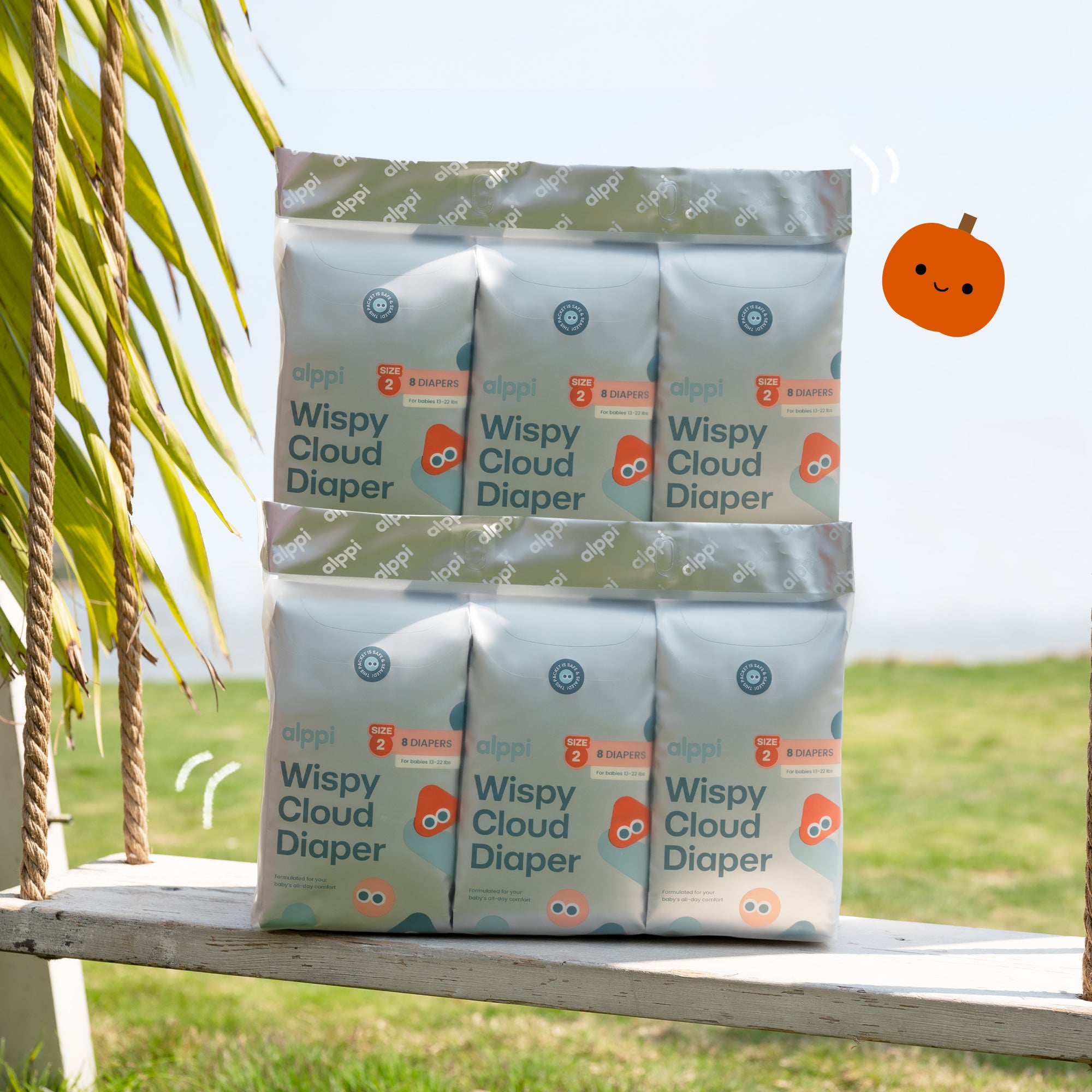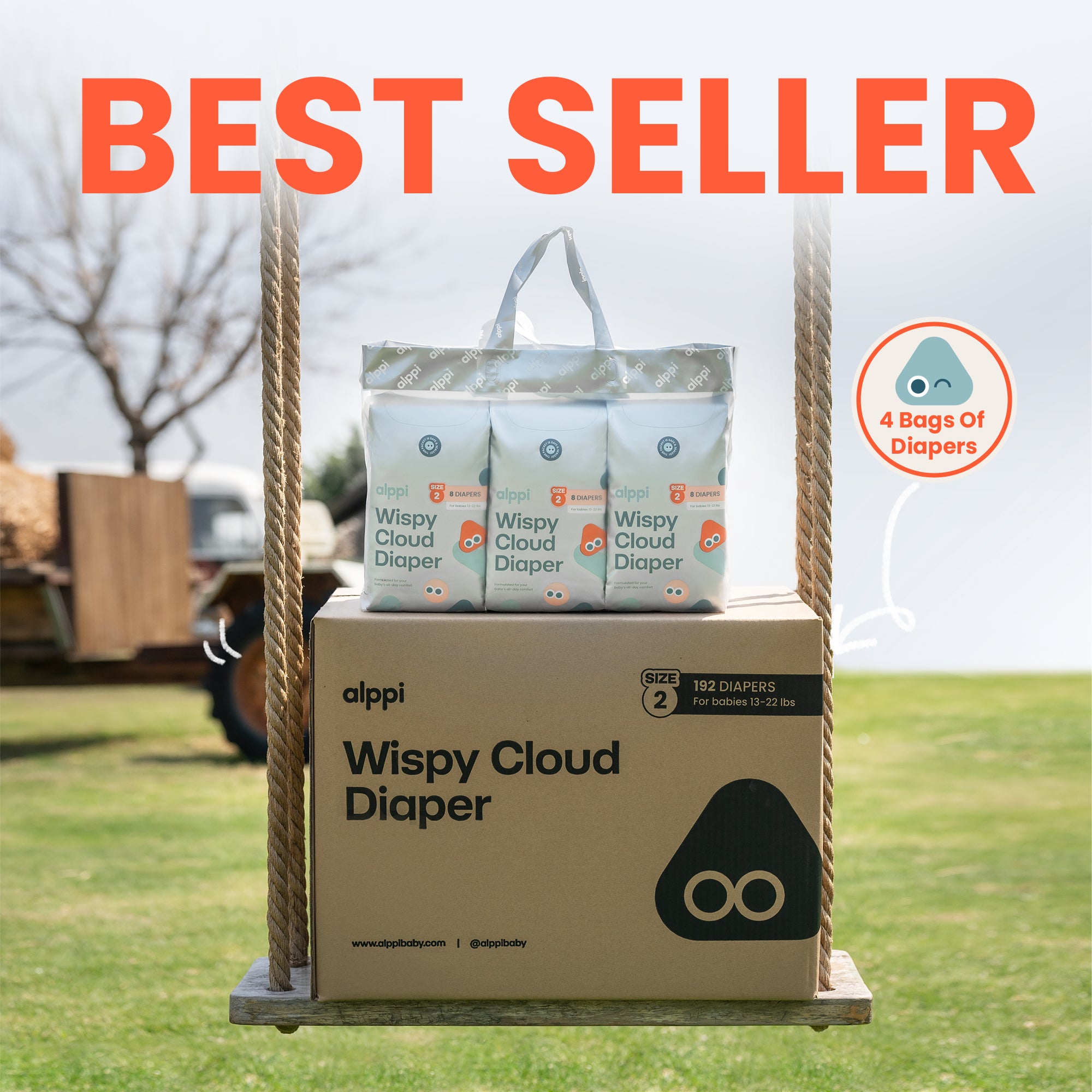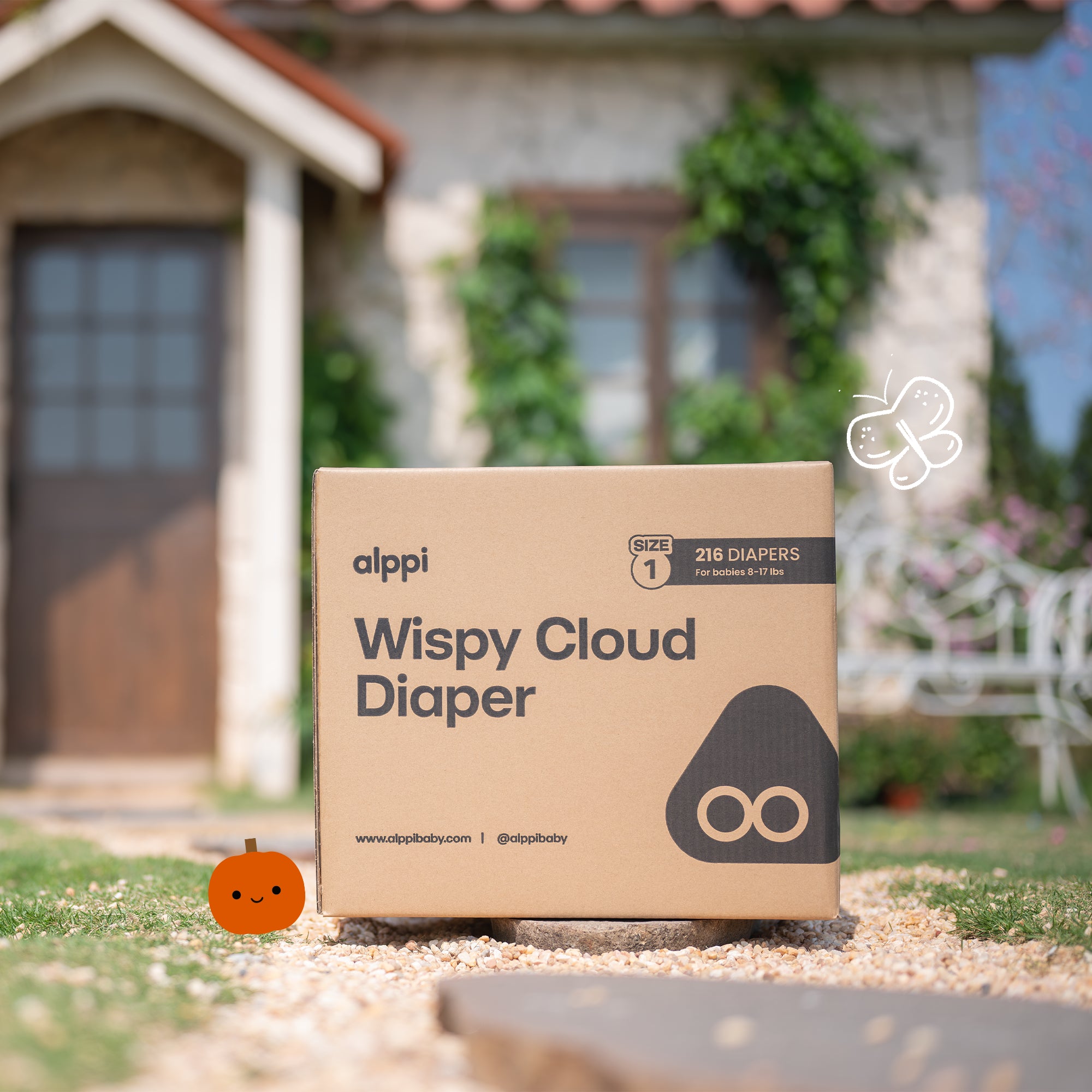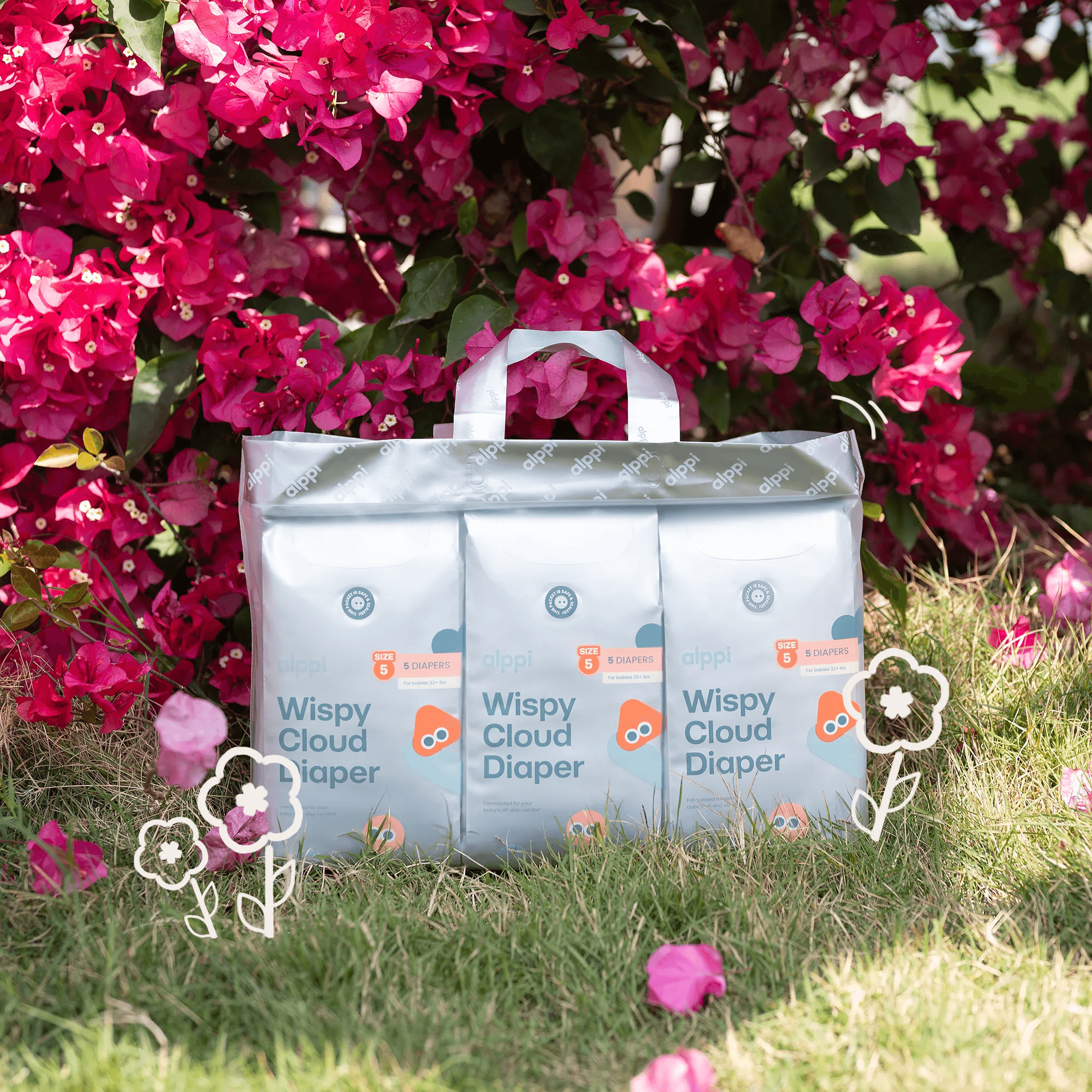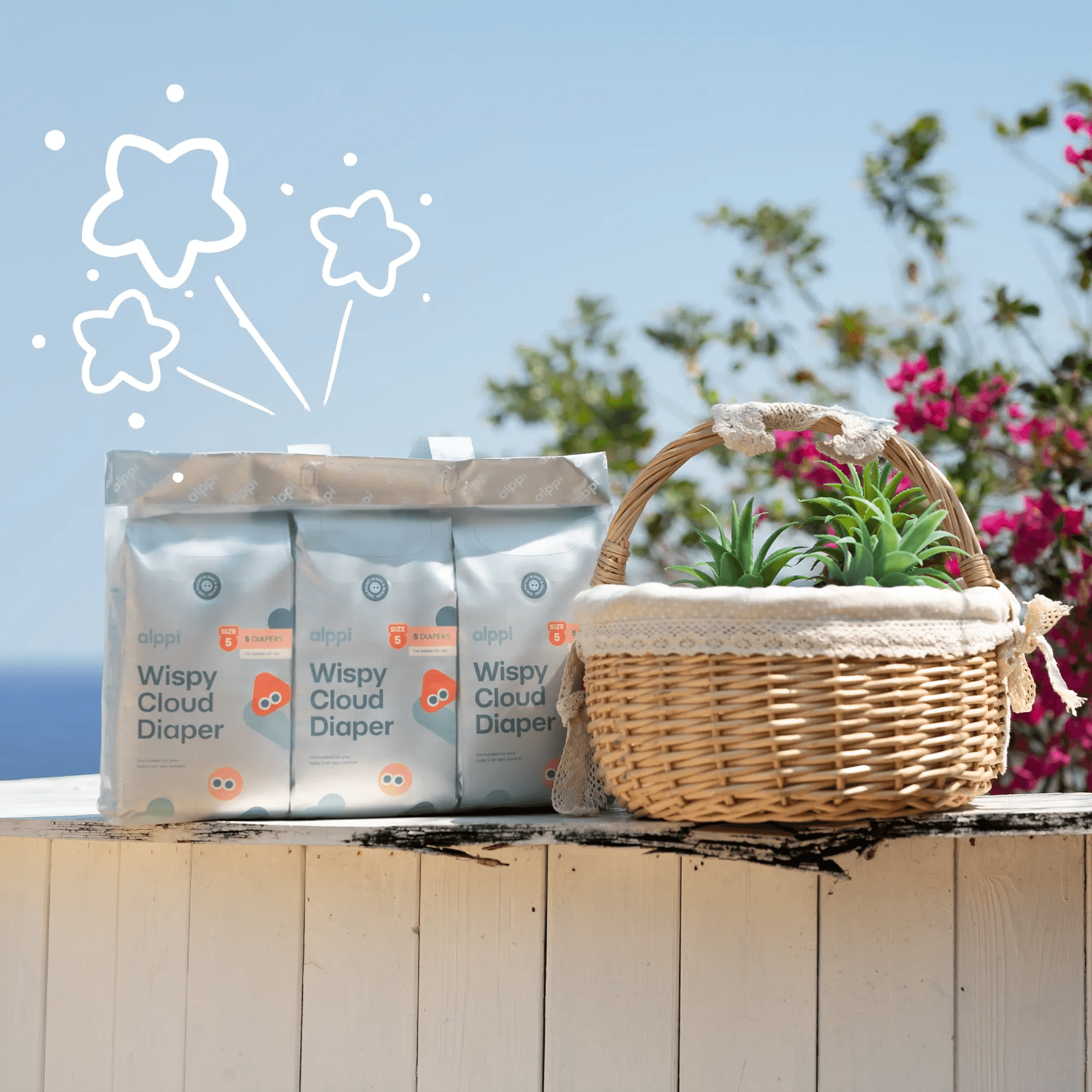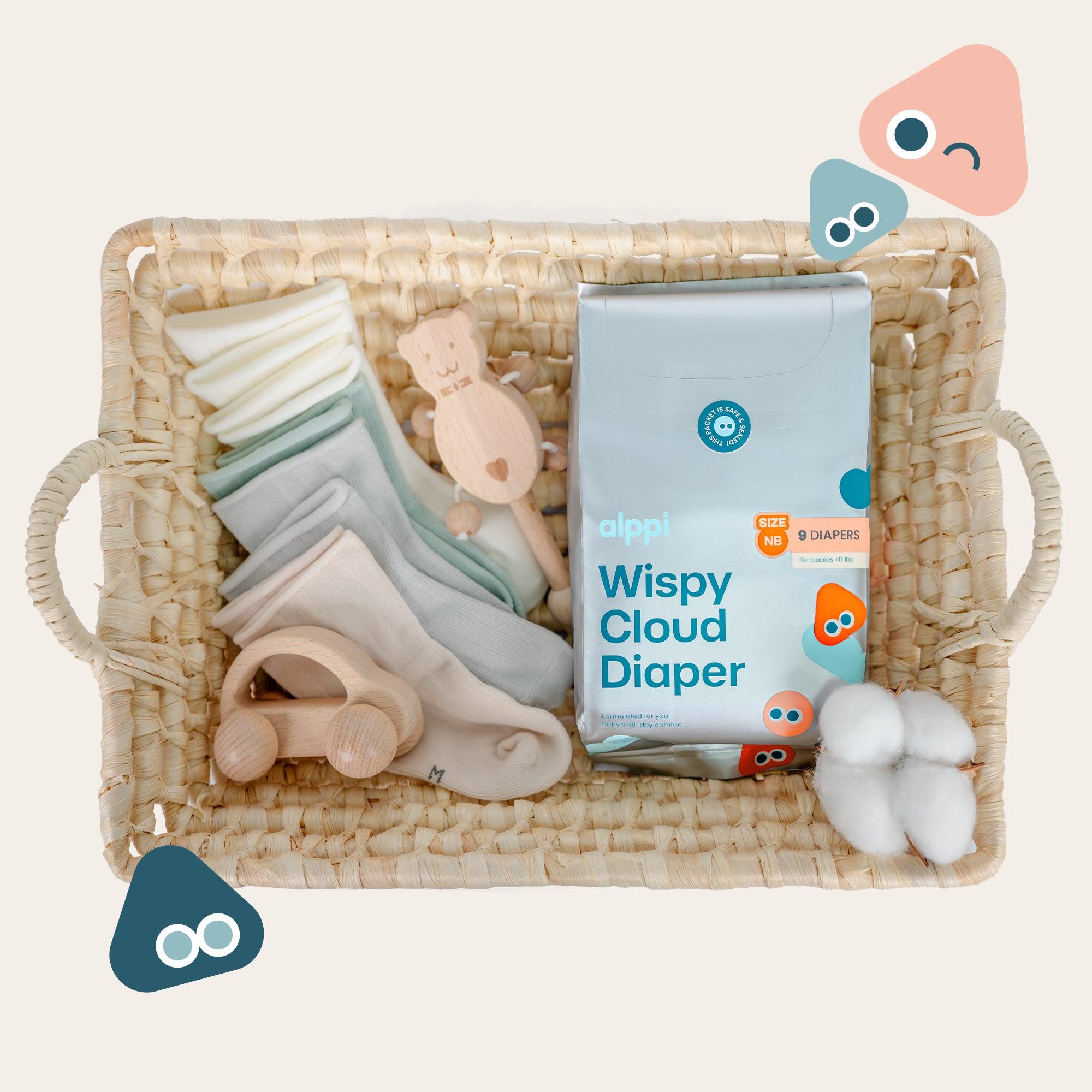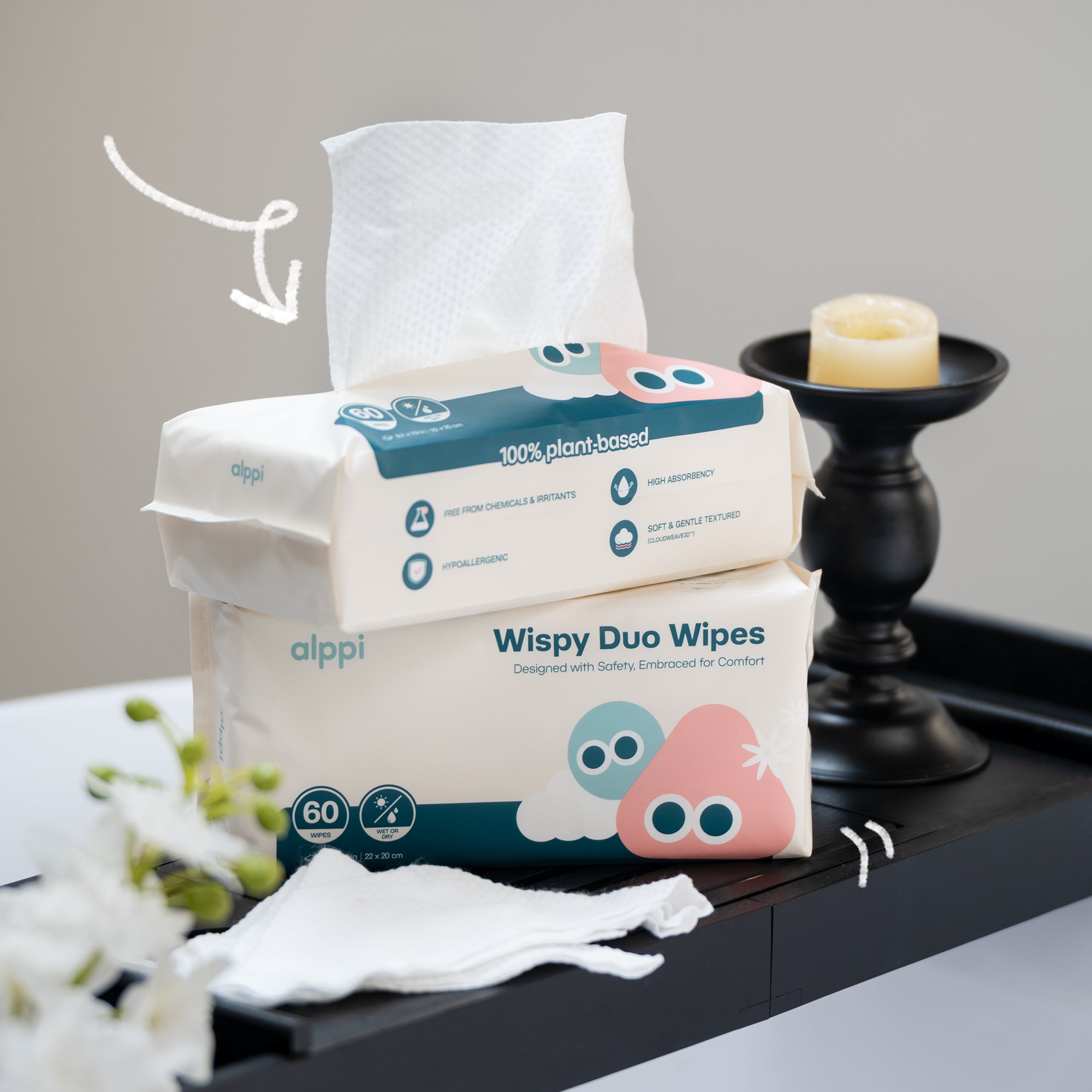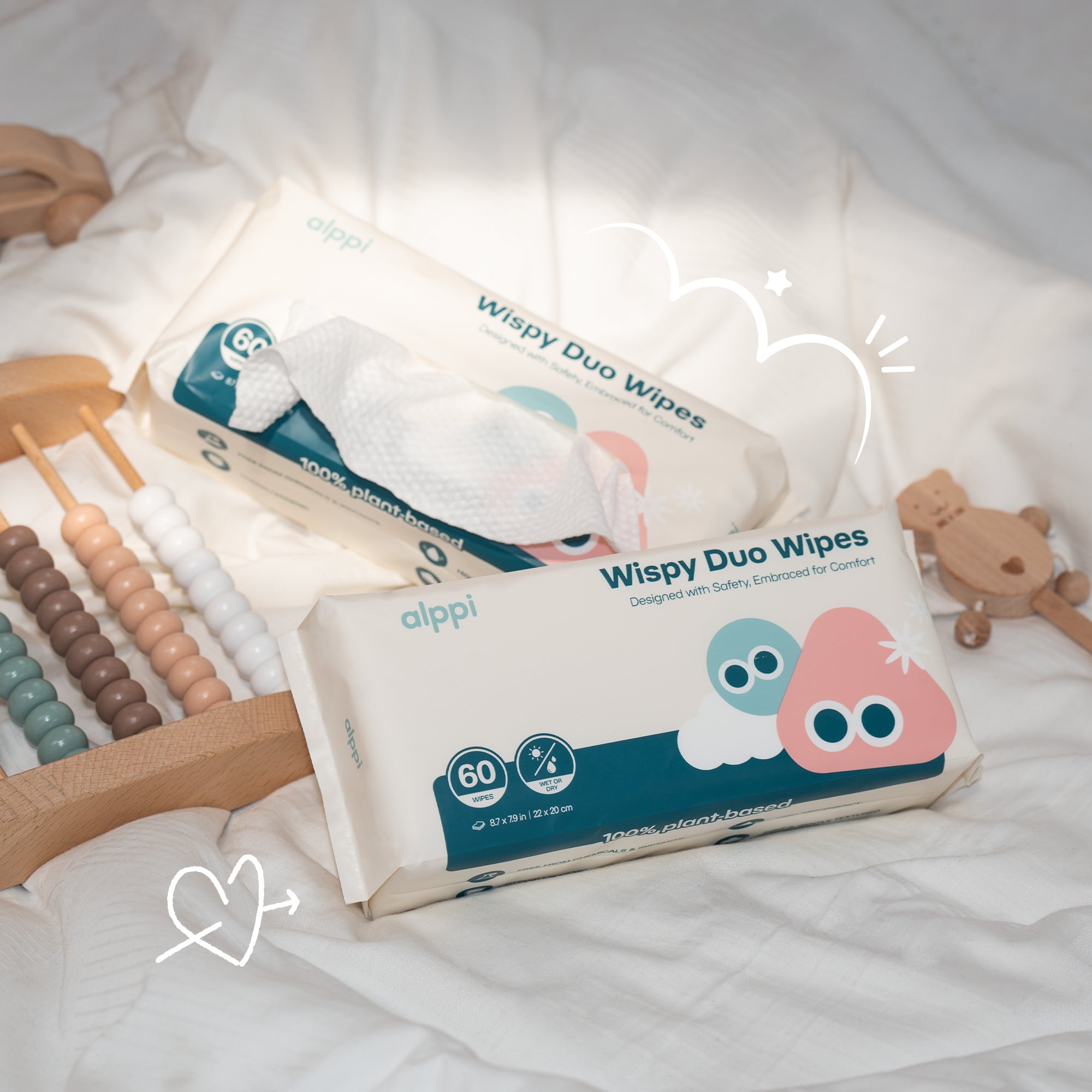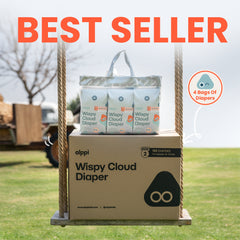Knowing when to size up diapers can feel like solving a puzzle, especially when your little one seems caught between two sizes. Those midnight blowouts and fussy diaper changes might be telling you something important about fit.
Your baby's comfort depends on getting the sizing just right. A diaper that's too small can cause red marks, frequent leaks, and general crankiness that no parent wants to deal with.
The good news? Your baby's body gives you clear signals when it's time to make the switch. Learning to recognize these signs will save you from unnecessary messes and keep your little explorer happy and dry.
Ready to give your baby the softest diaper experience? Our Wispy Cloud Diaper collection features ultra-gentle materials that feel like a cloud against your baby's skin.
When To Size Up Diapers: Physical Signs

Your baby's body will show clear warning signs when their diaper becomes too small. Red marks around the waist and legs, persistent leaks, and tabs that won't fasten properly usually mean it's time to move up a size.
Red Marks And Indentations Around Waist And Thighs
Red marks on your baby's skin are one of the clearest signs that their diaper is too tight. These marks show up where the diaper's elastic edges press against your baby's waist, hips, and thighs.
You'll notice these lines most often after taking off the diaper. Deep marks that take a while to fade mean the diaper's definitely too small.
Common locations for red marks:
- Around the waist where the top elastic sits
- On the thighs where leg cuffs wrap around
- At the hip area where side panels attach
Sometimes, these red marks can become painful. Babies might fuss more during diaper changes or just seem uncomfortable when lying down.
If you see any red marks, check the diaper fit right away. A good diaper fit shouldn't leave any marks on your baby's skin.
Frequent Leaks Despite Proper Diaper Application
Diaper leaks that keep happening usually mean your baby needs a bigger size, even if you put the diaper on just right.
Small diapers can't hold enough liquid. As your baby grows, they make more urine, but a too-small diaper just can't keep up.
Leaks often happen in these situations:
- During longer stretches between changes
- At night when the diaper needs to last many hours
- When your baby is very active and moving around
A tight diaper can also cause compression leaks. When the diaper's too snug, it can't expand properly to absorb liquid.
Sometimes you'll find wet clothes or bedding even if the diaper doesn't look totally full. That's because a small diaper can't spread liquid out evenly.
Notice where leaks happen most. Leaks around the legs or waist usually mean the diaper's too small, not that you put it on wrong.
Tabs That Barely Reach Or Won't Stay Fastened
Diaper tabs that barely reach across your baby's belly are a big clue that it's time to size up. Tabs should fasten easily on the front part of the diaper.
If the tabs only reach the sides or hips, the diaper's too small. You shouldn't have to really stretch the tabs just to close it.
Tabs that pop open during normal movement mean your baby has outgrown that size.
Look for these tab warning signs:
- Tabs that overlap when fastened
- Tabs that barely touch the front panel
- Tabs that pull away from the adhesive area
Some diaper brands print sizing guides on the front. These show where the tabs should land for the best fit.
The diaper should close straight across your baby's hips. If the tabs pull the diaper up or barely stick, it's time for the next size.
Difficulty Fitting Two Fingers Under The Waistband
You should easily fit two fingers under your baby's diaper waistband. This quick test helps you figure out if the diaper's too tight around their belly.
Slide two fingers between the diaper and your baby's belly. If you can't fit both comfortably, the diaper's too small.
The waistband should feel snug but not tight. It needs to be secure, not restrictive.
Watch for these waistband problems:
- Skin that bulges over the diaper edge
- Difficulty inserting even one finger
- Waistband that leaves deep marks
Your baby's skin should lie flat against the waistband. If you see a "muffin top" where skin pushes over the edge, size up right away.
Check the waistband fit every time you change your baby's diaper. As your baby grows, this is often where tightness shows up first.
Not sure which diaper is right for your growing baby? Browse our Staff Pick collection to discover the diapers our team trusts most for their own little ones.
Behavioral Changes That Signal It's Time To Size Up

Your baby's behavior can tell you more than just looking at the diaper. Fussiness during changes, squirming, and tugging at their diaper are pretty clear signs that comfort's an issue and it's time to size up.
Baby Seems Fussy Or Uncomfortable During Diaper Changes
If your usually calm baby suddenly gets cranky during diaper changes, the current size might be too tight. Babies feel discomfort when diapers press against their skin or limit their movement.
You might hear more crying when you put on a fresh diaper. Sometimes, babies arch their back or pull their legs up during changes.
This fussiness often comes from the waistband sitting too low or the leg openings being too snug.
If they seem unhappy or keep wiggling right after a change, the fit could be the problem.
Some babies calm down once you pick them up and the diaper shifts, but that's just a temporary fix. It's probably time to switch sizes.
Increased Movement And Squirming When Wearing Diapers
Babies who squirm a lot or seem restless might be trying to adjust an uncomfortable diaper. Extra movement during normal activities can mean the diaper's too restrictive.
You might notice this most when your baby is lying down or sitting. They may kick their legs more than usual or twist their body a lot.
Normal baby movement is different from discomfort-related squirming. Uncomfortable babies move in short, jerky motions, not smooth, playful ones.
Squirming often gets worse as the day goes on. Fresh diapers might feel okay at first but get uncomfortable as your baby moves.
If you notice more squirming right after changes or during quiet time, the size could be the issue.
Baby Keeps Trying To Pull Or Tug At Their Diaper
Older babies who can use their hands will often grab at diapers that don't fit well. This tugging shows they feel something's off, even if they can't say it.
You might see them pulling at the waistband or trying to push the diaper down. Some will grab at the leg areas if they're too tight.
This isn't just normal curiosity. Discomfort-related tugging happens over and over and seems focused on adjusting the fit.
Babies around 6-12 months old do this most. They've got enough hand control to reach the diaper but can't explain what's wrong.
If your baby never touched their diaper before and suddenly won't leave it alone, consider sizing up. The behavior usually stops with a better-fitting diaper.
More Frequent Blowouts During Active Play Time
Blowouts that mostly happen during crawling, rolling, or active play suggest the diaper can't handle your baby's movement. A good diaper should stay in place during all this activity.
Active babies need extra room for diapers to move with them. Too-small diapers shift around and create gaps where messes escape.
These blowouts happen during tummy time, crawling, or when your baby's playing energetically. The mess usually comes out the back because movement pushes the waistband down and opens a gap.
If most blowouts happen when your baby's moving, the diaper size is probably the problem.
Weight And Age Milestones For Each Diaper Size
Diaper sizing is based on weight, not age, but most babies hit certain weight milestones at predictable times. Each size overlaps a bit with the next, so you've got some wiggle room as your baby grows.
Diaper Size Guide
|
Diaper Size |
Weight Range |
Typical Age |
Key Features |
When to Switch |
|
Newborn |
Up to 8 lbs |
Birth-2 weeks |
• Umbilical cord cutout<br>• Perfect for hospital stay |
When baby reaches 8 lbs or tabs barely reach |
|
Size 1 |
8-14 lbs |
Birth-3 months |
• No cord cutout<br>• First size for many babies |
Red marks appear or frequent leaks at 12+ lbs |
|
Size 2 |
12-18 lbs |
2-6 months |
• More room in seat area<br>• Better for chunky legs |
Blowouts increase or diaper doesn't cover bottom |
|
Size 3 |
16-28 lbs |
4-10 months |
• Extra stretch for active babies<br>• Higher absorption capacity |
Baby becomes more mobile and needs flexibility |
Quick Tips
- Some babies skip Newborn size if they weigh 8+ lbs at birth.
- Weight matters more than age for a proper fit.
- Switch sizes when you see red marks on your baby's skin or experience frequent leaks.
- Two fingers should fit comfortably under the diaper's waistband.
Why Weight Matters More Than Age For Proper Diaper Fit
Diaper sizing follows weight because babies grow at different rates. A 6-month-old might weigh anywhere from 12 to 20 pounds.
Age-based sizing just doesn't work for every baby. Weight gives you the most accurate fit for your little one.
Key Diaper Size Chart Guidelines:
- Always check the weight range on the package
- Think about your baby's body shape, not just weight
- Some babies need different sizes for day and night
Your baby's weight affects how much the diaper can absorb. A diaper that's too small fills up faster and leaks more.
Weigh your baby regularly to know when to switch sizes. Most pediatrician visits include weight checks you can use for diaper sizing too.
Want diapers you can feel completely confident about? Explore our Safety Page Collection featuring our gentlest, chemical-free options for sensitive skin.
Conclusion: When To Size Up Diapers
Sizing up diapers doesn't have to be guesswork when you know what signs to watch for. Trust your instincts and your baby's cues – red marks, frequent leaks, and fussiness during changes are all telling you it's time to move up a size.
Remember, every baby grows at their own pace. What matters most is finding the right fit for your little one's comfort and your peace of mind.
Ready to find the perfect diaper for your growing baby? Learn more about what makes a good diaper and discover why quality matters for your family's daily routine.
Frequently Asked Questions: When To Size Up Diapers
How do I know when to size up diapers?
Watch for frequent leaks, red marks around your baby's waist or thighs, and tabs that barely reach across their belly. Try slipping two fingers under the waistband – if you can't fit them comfortably, the diaper's too snug. Fussiness during changes or restricted movement are also clear signs it's time to size up.
When to change diaper size from 1 to 2?
Most babies transition from size 1 to 2 around 3-4 months when they reach 12-14 pounds. Switch before you see problems like leaks or red marks rather than waiting for issues to develop. Size 2 gives active babies the extra room they need for rolling, scooting, and crawling comfortably.
At what age do you use size 2 diapers?
Most babies wear size 2 diapers between 2-6 months old, though weight matters more than age. Some larger babies need size 2 as early as 2 months, while smaller babies might stay in size 1 until 4-6 months. Always check your baby's weight against the package guidelines – size 2 typically fits babies weighing 12-18 pounds.
Do blowouts mean diaper is too small?
Frequent blowouts usually indicate the diaper is too small to contain your baby's waste properly. When diapers are too tight, they fill up quickly and the leg cuffs can't seal effectively. Occasional blowouts are normal, but if they're happening several times a week, it's time to size up.


